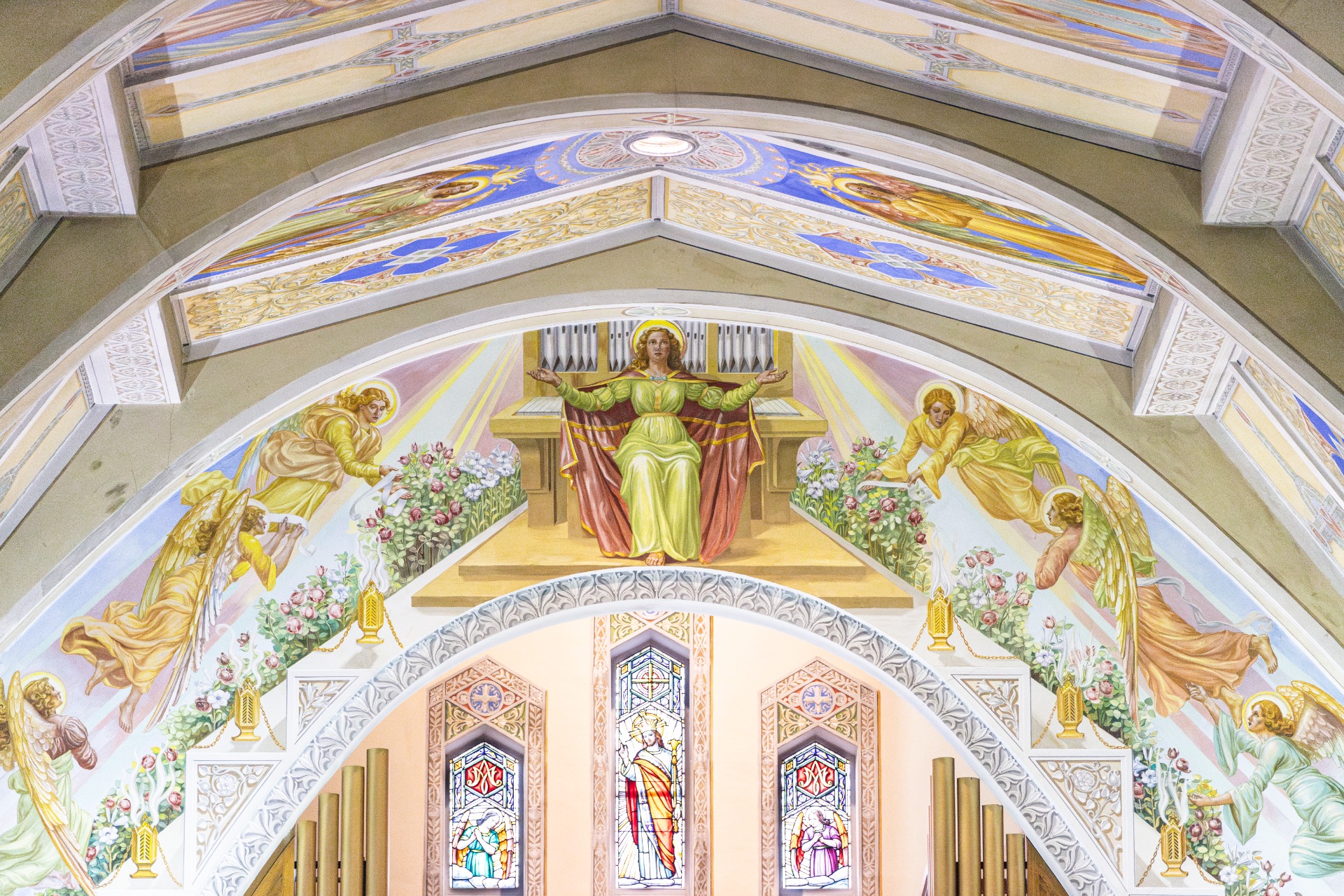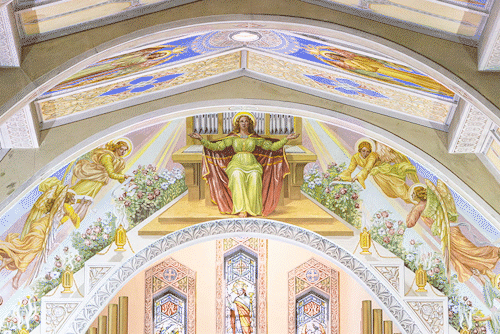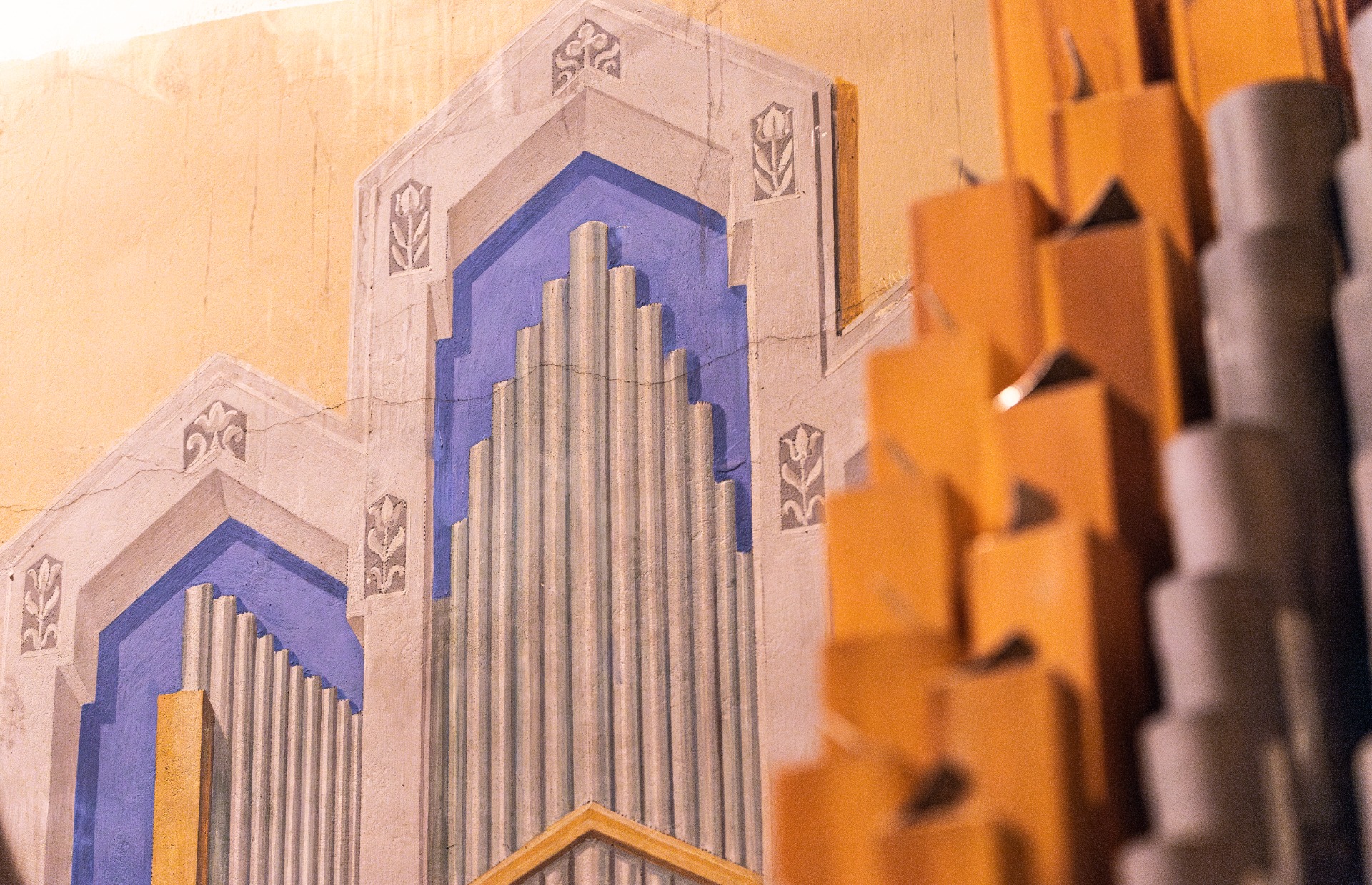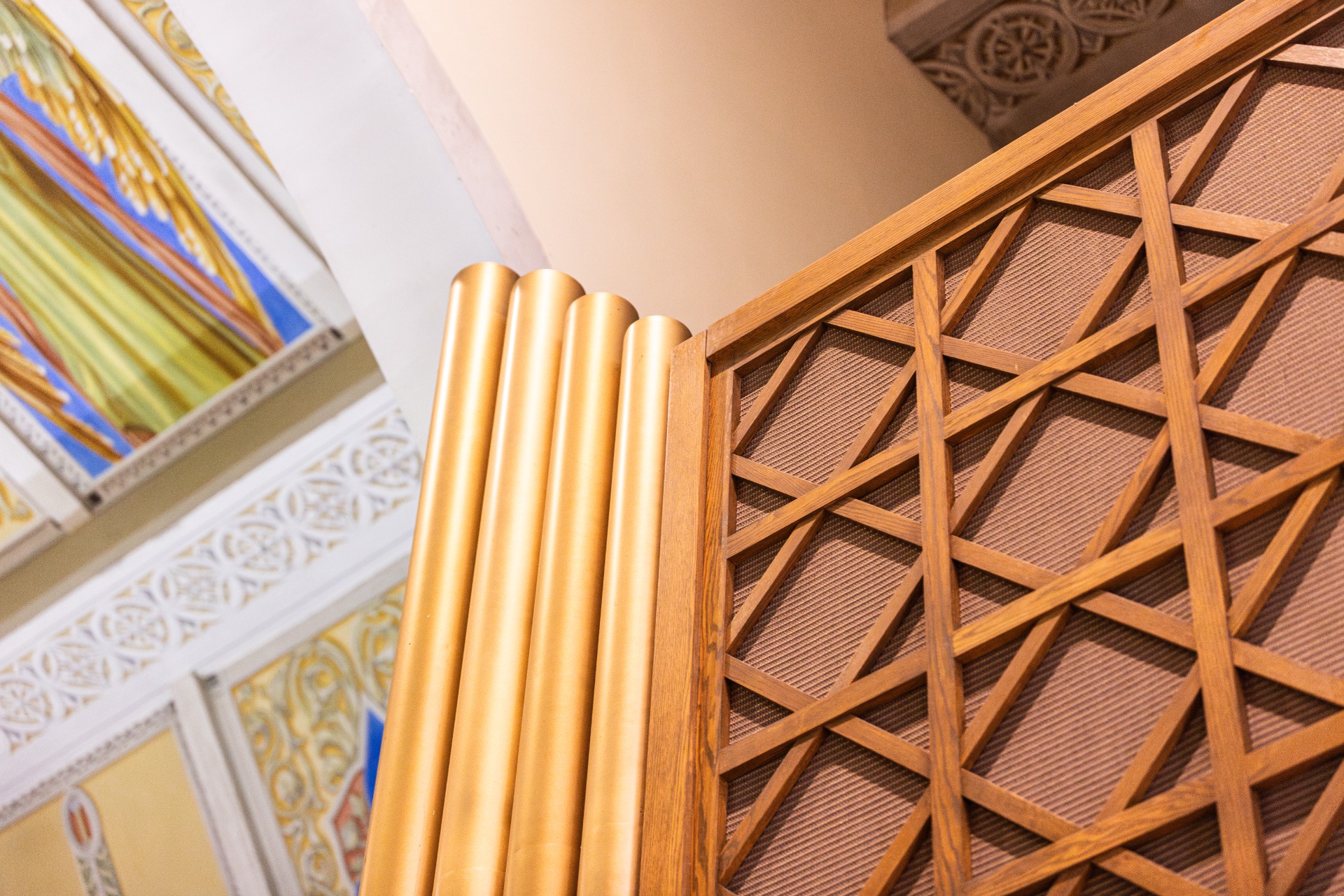
The décor for the mezzanine
The rear gallery is every bit as ornately decorated as the rest of the church. It is surmounted by a large, arch-shaped fresco depicting Saint Cecilia, the patron saint of musicians, surrounded by angels.

Saint Cecilia was a 2nd century young Roman woman who devoted her life to God instead of marrying. She had such a profound love of music that it is said that, as a martyr, she played an invisible instrument in praise of the greatness of God. For this reason, she became the very embodiment of music. Look closely at the words at the bottom of the fresco: they relate to this event. Cecilia cum angelis domino decanabat, which means “Cecilia and the angels sang for the Lord.”

Nincheri depicted Saint Cecilia using the symbols that represent her: the organ, which evokes her passion for music, and roses and lilies, which bear witness to her legendary purity and holiness. Legend has it that when she died a martyr, these two types of flowers grew at the very spot where blood had flowed from her wounds.
Now cast your gaze towards the rear balcony where trompe l’oeil has been used in the frescoes to recreate architectural details and embellished coffers. Upon closer look, you can see that the organ conceals part of the painted décor.

One might well wonder why, but it should be known that when Nincheri created the decoration for the rood screen, the Casavant organ had yet to be installed. At the time, a much smaller instrument stood in its place and this is why a few of the frescoes are now hidden behind the instrument’s pipe cases.

It was also on the wall behind these cases that Pierlucio Pelissier, the restorer of the frescoes, left a lasting record of his outstanding work in the form a discreet note with his signature.